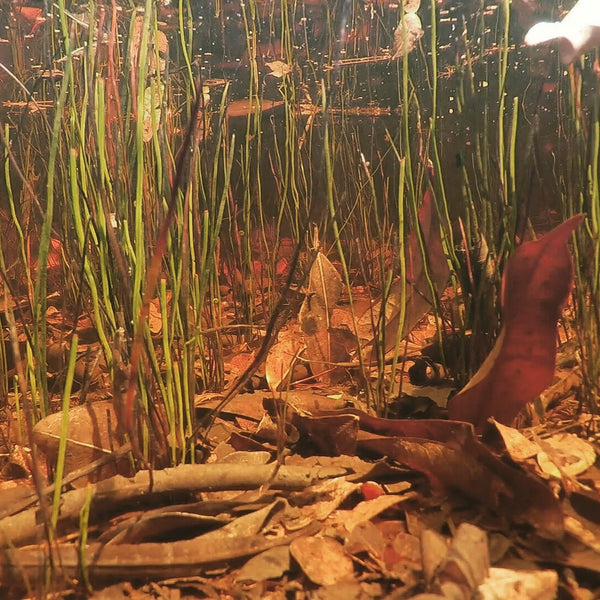- Continue Shopping
- Your Cart is Empty
Embracing "Aquatic Analogs"
We've talked a lot about flooded forest floors and inundated meadows in the tropical regions of the world, specifically South America and Southeast Asia. Being terrestrial habitats, these forest floors are covered with shrubs and grasses, many of which are not typically available in the aquarium hobby.
Grasses, such as Paspalum repens, a common species found in South America, and several other grasses, are quite abundant in these habitats, and are most resistant to prolonged submersion.

Now, we DO have access to some species, such as Sedges and other riparian or semi-aquatic/bog plants from genera that are found in these regions, such as Papyrus (Cyperus), Acorus, Orzyas, etc.

Since many of these plants tolerate submersion for extended periods of time, they are of great interest to many of us for use in our aquariums. Of course, part of what interests me is that these are generally very hardy plants.

There are numerous species more commonly available from commercial nurseries in North American and European nations, so creating realistic representations of these habitats in our aquariums is more attainable than ever!

Now, with this in mind, there are also lots and lots of possibilities for creating unique aquatic displays with what I would call "aquatic analogs" of these grasses and shrubs. In other words, incorporating some true aquatics to replicate the "look" of the flooded forests using representative species.
I freely admit that this is a sort of "cheat"- but when you think about it, it's a pretty good method that can be employed if you want to represent the inundation period for the theme of your aquarium, and aren't able to secure or grow the terrestrial/semi-aquatic analogs to the species found in these habitats.
So, I'm thinking about plants like Echinodorus tenellus, the "Pygmy Chain Sword", which grows in a most "grasslike" state, and certainly is representative of the grasses one might find on a flooded Panatanal or forest floor habitat in South America.

It's not hard to cultivate a little section of these plants in your representation of a flooded forest, and drop in a few leaves and botanicals, and achieve a relatively realistic-looking facsimile!

Another great candidate that has a sort of "generic tropical terrestrial grasslike" appearance would be Cryptocoryne parva. This diminutive plant actually can be grown emerged, so for "semi-flooded" igapo or varzea biotope aquariums, it would be really adaptable! And when submerged, it bears strong resemblance to Paspalum or other tropical, submersion-resistant grasses. (It's the plant in the foreground in the below pic, BTW)

I suppose the old fave, Sagittaria, could also be employed for this purpose, but some species can achieve a larger size and perhaps ultimately be not as realistic, so you'd need to choose carefully. More exotic, but readily available as tissue-cultured, would be the beautiful Lilaeopsis mauritiana, a beautiful species often called "Micro Sword" for its appearance and size.
And of course, since we're representing a flooded forest floor or meadow, with patchy growth over rich soil and leaves, you likely don't need to have the full-on green lawn that planted aquarists strive for so ardently!

Again, since the intense growth of aquatic plants isn't the primary focus of such a display, you have a tremendous amount of "latitude" over their care when working with them in this manner! You don't need to go nuts with CO2 or massive and complicated fertilizer regimens. A good aquatic soil, sand, and or other media, accompanied by good lighting is all you need.
Employing a good cover of leaf litter, such as Texas Live Oak leaf litter or smaller-sized leaves, such as Malaysian Yellow Mangrove leaves, along with selected botanicals, you could create a very realistic representation of these habitats in your aquarium!

I think that despite the fact that this is sort of "cheat" (and yeah, it most definitely IS! ), you could certainly create a pretty faithful representation of these unique habitats, and inspire further research into them. You need not be "hamstrung" by not being able to source or obtain the actual terrestrial plants found in these habitats...you could always turn to "aquatic analogs" for a good start!
Stay creative. Stay studious. Stay diligent. Stay resourceful...
And Stay Wet.
Scott Fellman
Tannin Aquatics









Scott Fellman
Author